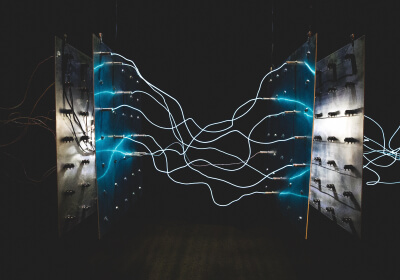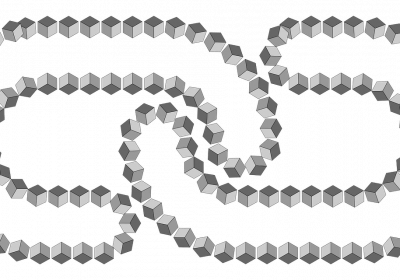How does bitcoin work? This article will talk about that very simply and not go into great detail so as to not confuse anyone that may be 100% new. There are a couple of players in the Bitcoin ecosystem that allow individuals to send bitcoin to one another, and they are miners and nodes (those articles go into greater depth about what they are). Without one or the other the entire Bitcoin system would grind to a halt, and no one would be able to send the currency to each other.
Mining bitcoin
Almost every depiction of Bitcoin mining in the media shows an infographic with a pick axe and computer that hacks away at a rock to generate coins. It’s simple to visualize but doesn’t really represent what’s actually happening. Anyone can mine bitcoin by downloading software and running it on their computer. When running this software, your computer is using it’s processing power (electricity) to execute a mathematical function in a lottery to find a special string of characters. The mathematical function is very fast and easy to do, and is called “hashing”.
A bunch of random data is gathered together and hashed millions of times until one person finds the lucky string of characters. If the miner wins this lottery, it stops hashing and takes the random data it used during the hashing and broadcasts it to the Bitcoin nodes in the network for validation that it actually found a real block.
Bitcoin nodes
Bitcoin nodes are the backbone of the network because they actually are the ones that hold the Bitcoin blockchain in their memory and enforce the block validation from miners. Again, just like miners, the Bitcoin node is a piece of software that anyone can download and run on their computer. There are over 100,000 people running a Bitcoin node currently. It downloads the blockchain from others in the network and validates the blocks in the chain automatically. The size of the blockchain is hundreds of gigabytes in size currently and grows every time a new block is found and added to the chain by about 1 megabyte every ten minutes.
The Bitcoin node will receive new blocks from miners and check their validity using the randomized data that was sent to it from the lucky miner. The node confirms the block’s validity using the same rules the miner used to find the block, so there’s no cheating. The node will add the new block to the end of the blockchain and award the Bitcoin address with new, freshly minted bitcoins out of thin air as a reward for finding a block. The node will then let the other nodes in the network of the new block so the other nodes can verify it’s a real block for themselves, and then add it to the end of their own copy of the blockchain. The node will also let the other miners know they were out of luck and should start working on a new block.
Bitcoin blocks
Bitcoin blocks are the pieces of the chain within the blockchain. They themselves represent a collection of payments from one user to another user’s address, and is why it takes 10 minutes to get 1 confirmation: A Bitcoin miner selects a bunch of payments to include in a block as a part of their hashing data then gets to work. Once found, it is broadcast to any Bitcoin node along with the miner’s Bitcoin address (so the node knows what address to award the coins to) and then works on the next block.
Conclusion
This was a very top level “How does Bitcoin work?” breakdown. We learned how miners and nodes interact with other in a broad sense, and with this knowledge you now should understand how the system behaves without too much technical know-how.




